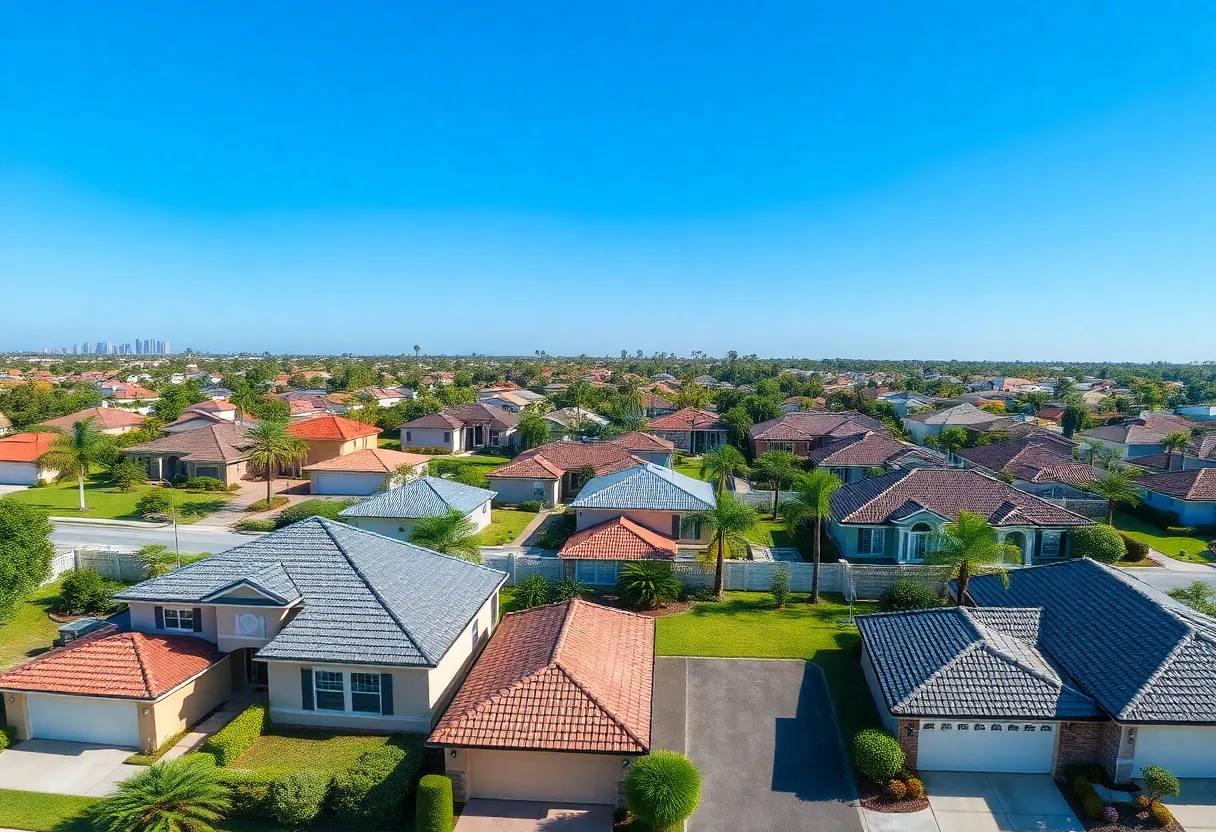News Summary
Florida’s housing market is experiencing a notable correction, with active home listings soaring to unprecedented levels. As demand declines and costs rise, many homeowners list their properties, reflecting a shift in the once booming real estate sector. Median home prices continue to rise, while rental prices have also surged, intensifying the affordability crisis. Factors such as increasing insurance rates, population surges, and a deficit of affordable housing units complicate the landscape, prompting local officials to explore solutions for sustainable housing.
Florida is witnessing a significant shift in its housing market, with a surge in available homes leading to a correction in an area once dominated by escalating prices and high demand. As of April 2024, nearly 52,000 active home listings have been reported across South Florida’s tricounty area—Miami-Dade, Broward, and Palm Beach—as compared to only 12,825 listings recorded in 2022. This notable rise marks the highest level of home inventory in almost ten years and reflects evolving dynamics within the real estate landscape.
Analysts suggest that the increase in listings stems from multiple factors: a decline in demand for homes, rising costs that have caused many homeowners to sell, and a slowdown in new residents relocating to the region. Locals are being priced out due to escalating costs, which has prompted many current homeowners to take advantage of the current market conditions and list their properties.
One contributing factor to this market adjustment is the rising costs associated with owning a home in Florida. Homeownership has become less affordable as homeowners face soaring homeowner association fees and skyrocketing property insurance rates. Current estimates show that typical household incomes in Miami-Dade, Broward, and Palm Beach counties range from $70,000 to $80,000, an amount that increasingly falls short of qualifying for a mortgage due to high home prices.
The median home price in Florida reached $393,500 in October 2024, with Miami’s median price peaking at an even higher $629,575. Concurrently, rental prices have also surged, with the average monthly rent in Miami reaching $2,944 as of August 2024, signifying a 42% increase since 2020. As a result, many homeowners are now dedicating 35% to 45% of their income solely to housing—a figure well above the recommended limit of 28%.
The real estate market in Florida has recently entered what experts are referring to as a multi-year correction phase, primarily driven by oversupply and ongoing affordability challenges. Data highlights that a significant portion of home purchases—42%—are being made by cash buyers, underscoring competitive market dynamics in a region that has historically attracted high-income earners.
South Florida has seen substantial population growth, with nearly 2.76 million new residents reported between 2021 and 2023. A notable 68% of these new residents earn over $100,000 a year, which has further inflated the region’s economic inequality. However, many Floridians are struggling to find affordable housing, with a critical shortfall of affordable units documented. In Palm Beach County, there exists a deficit of 106,363 owner units and 37,537 renter units, pushing lower-income families into increasingly difficult housing situations.
Despite the influx of residents, construction of new housing has not kept pace with the population growth projected to exceed 205,000 by 2035 in Palm Beach County alone. The monthly rental market is also tightening, with rentals priced under $2,000 increasingly scarce, losing 19,000 units in 2022 alone.
Local officials are reevaluating funding allocations for affordable housing projects in order to increase density and adjust eligibility requirements for households making no more than 110% of the area’s median income. However, as homeowners and prospective buyers face ongoing financial pressures, the property insurance crisis continues to exacerbate matters, with average premiums having risen by 60% since 2019. Such increasing costs have led several major insurers to exit the market, leaving nearly a quarter of Florida homeowners reliant on the state’s Citizens Insurance program.
Florida’s infrastructural issues are also coming to light, with many water mains over 50 years old and a projected requirement of $16 billion necessary to address repairs. Additionally, ongoing gentrification in areas such as Palm Beach County is making it increasingly difficult for households earning less than $145,000 to access housing.
As South Florida’s housing market attempts to recalibrate amid these developments, the residents and local stakeholders will need to navigate the complexities of affordability, supply, and demand to foster a stable and accessible housing environment.
Deeper Dive: News & Info About This Topic
- Miami Herald
- Newsweek
- HousingWire
- Palm Beach Post
- Forbes
- Wikipedia: Housing in Florida
- Google Search: Florida Housing Market
- Google Scholar: Florida housing affordability
- Encyclopedia Britannica: real estate Florida
- Google News: Florida real estate news

Author: STAFF HERE PETERSBURG WRITER
The ST PETERSBURG STAFF WRITER represents the experienced team at HEREStPetersburg.com, your go-to source for actionable local news and information in St Petersburg, Pinellas County, and beyond. Specializing in "news you can use," we cover essential topics like product reviews for personal and business needs, local business directories, politics, real estate trends, neighborhood insights, and state news affecting the area—with deep expertise drawn from years of dedicated reporting and strong community input, including local press releases and business updates. We deliver top reporting on high-value events such as Grand Prix of St. Petersburg, Localtopia, and SHINE Mural Festival. Our coverage extends to key organizations like the St. Petersburg Area Chamber of Commerce and St. Pete Downtown Partnership, plus leading businesses in finance, manufacturing, and healthcare that power the local economy such as Raymond James Financial, Jabil, and Bayfront Health St. Petersburg. As part of the broader HERE network, including HEREJacksonville.com, HEREOrlando.com, HERETallahassee.com, and HERETampa.com, we provide comprehensive, credible insights into Florida's dynamic landscape.





